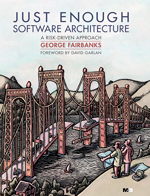Book chapter: A Conceptual Model of Software Architecture
When a coach and a rookie watch the same game, they both see the same things happening on the field, but despite the rookie’s eyes being younger and sharper, the coach is better at understanding and evaluating the action. As a software developer, you would like to understand and evaluate software as effectively as the coach understands the game. This chapter will help you build up a mental representation of how software architecture works so that when you see software you will understand it better and will design it better.
If you want to become as effective as a coach, you could simply work on software and wait until you are old. Eventually, all software developers learn something about architecture even if they sneak up on it indirectly. It just takes practice, practice, practice at building systems. Consider another path, one where you see farther by standing on the shoulders of others. Perhaps we are still waiting for the Isaac Newton of software engineering, but there is plenty to learn from those who have built software before us. Not only have they given us tangible things like compilers and databases, they have given us a set of abstractions for thinking about programs. Some of these abstractions have been built into our programming languages — functions, classes, modules, etc. Others likely will be, such as components, ports, and connectors.



